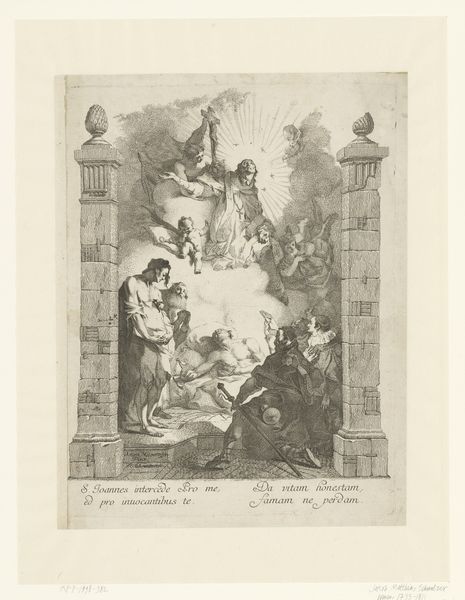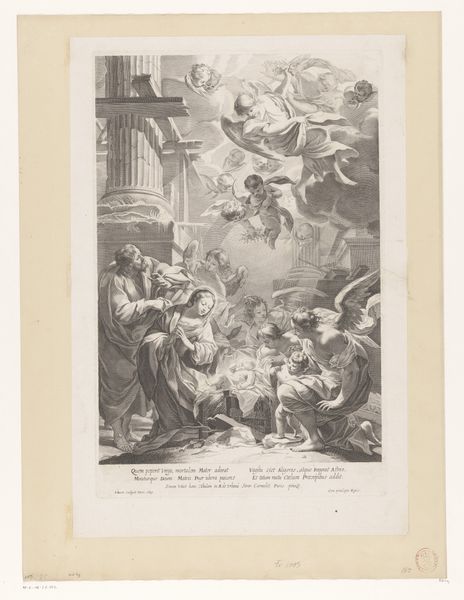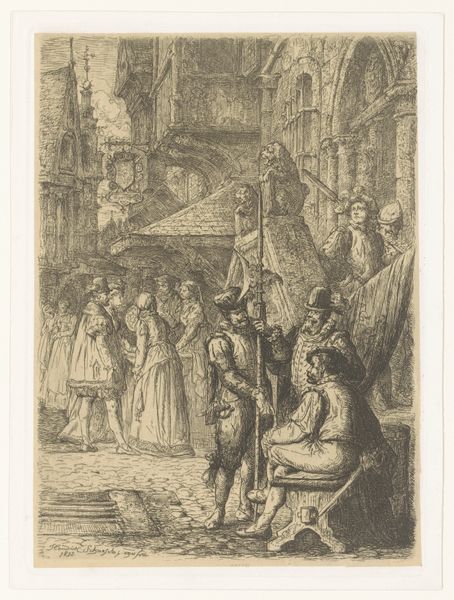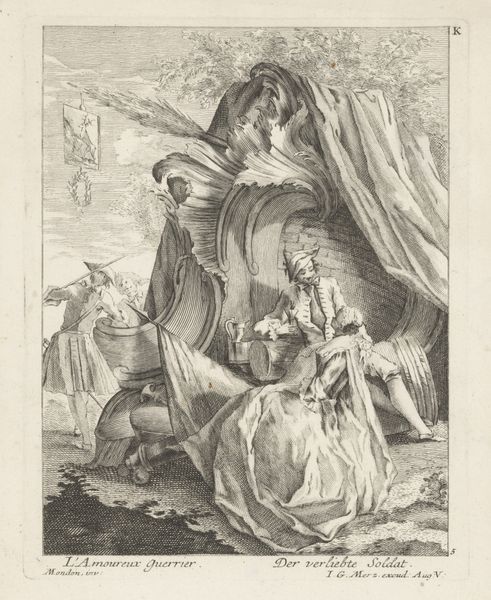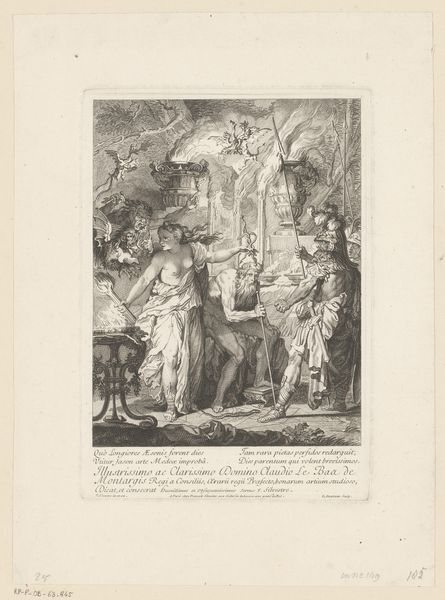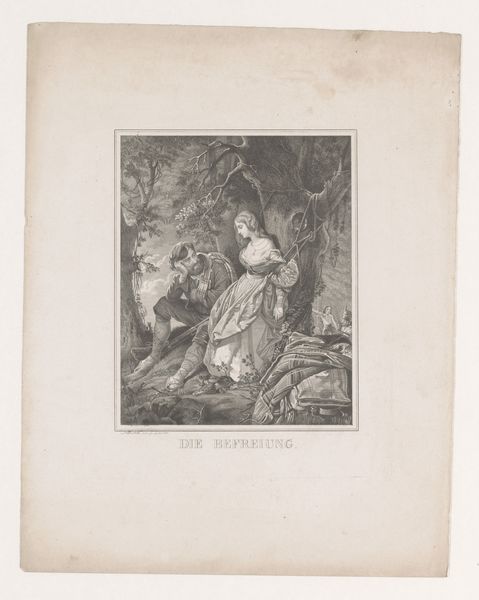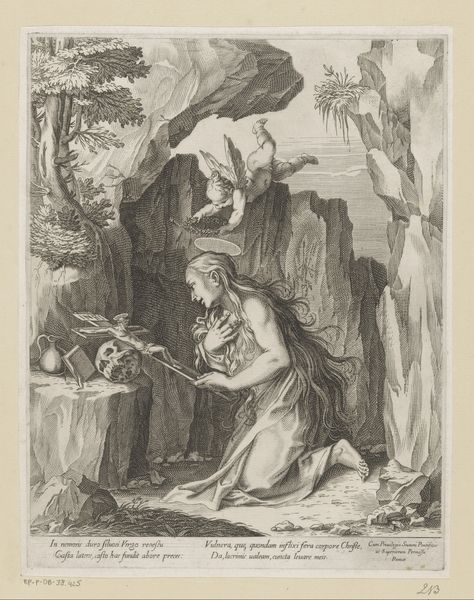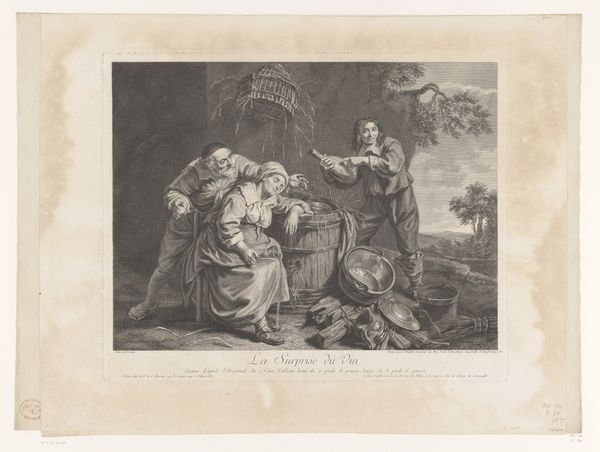
print, engraving
# print
#
genre-painting
#
history-painting
#
academic-art
#
engraving
Dimensions: height 248 mm, width 176 mm
Copyright: Rijks Museum: Open Domain
Curator: Looking at this engraving from around 1841-1842 by Henri Hendrickx titled, “Saint Nicholas in adoration before the Christ Child," my immediate reaction is it has this strange old-world dreamlike feeling. Does that resonate with you? Editor: Absolutely, the piece operates on a representational level within the artistic conventions of academic art and hagiography. However, reading beyond its apparent veneration, what sociopolitical implications were in play when an artist from this era chose to depict such religious iconography? Curator: You always go straight to the hard questions! Visually, the scene unfolds beneath this ornate, arched opening. St. Nicholas kneels, presenting what looks like a small laurel wreath. It's odd; he isn't usually rendered with this kind of devout, almost servile posture, is he? And did you see, off to the left, a little bath scene going on? Babies everywhere! Editor: The bathing cherubs complicate any straightforward reading. Hendrickx situates St. Nicholas in relation to not only the Virgin and Child, but these bathing figures also serve as a metonym, signifying themes of cleansing, birth, and rebirth. The image then begs questions about innocence, divine purpose, and social responsibility—which is central to Nicholas' identity as a figure venerated for generosity, isn't it? Curator: Good point, and now it makes sense why Hendrickx chooses to focus on this meeting with a much younger Christ! Even his clothes are ornately etched but somehow softer and not at all heavy looking, almost heavenly... I guess I wasn't too far off. Editor: Exactly. Thinking critically about "heavenly" depictions, one can unpack themes about the role of redemption in socio-cultural beliefs. In the nineteenth century context, could the emphasis on philanthropy provide solace to social inequalities of the era? It raises critical points regarding power, representation, and societal reform that merit examination. Curator: Oh! It always amazes me how context deepens the experience. I saw something beautiful, with interesting textures, but you placed it on an entire axis of power dynamics that gives it incredible value, not as simple scene, but as this reflection on societal ideas. Thanks! Editor: It's just peeling the layers and realizing that within images of devotion there can also exist silent but incisive commentaries on human dynamics.
Comments
No comments
Be the first to comment and join the conversation on the ultimate creative platform.
